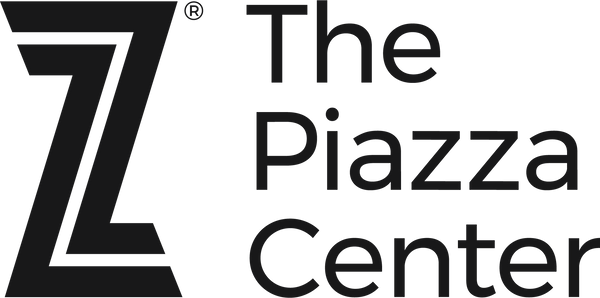
Hypochlorous Acid Skincare: Lumion vs Magic Molecule vs Prequel
What Is Hypochlorous Acid in Skincare? Lumion vs. Magic Molecule vs. Prequel
Hypochlorous acid (HOCl) has been one of the most exciting clean-beauty breakthroughs in recent years. Originally studied for its antimicrobial and healing properties, HOCl is now making its way into everyday skincare routines for its ability to calm irritation, support the skin barrier, and keep breakouts at bay.
But here’s the catch: not all hypochlorous acid products are created equal. Because HOCl is a volatile molecule, formulation matters—and that’s where pH, stability, and parts per million (PPM) of active HOCl come into play.
At The Piazza Center, we’ve recently added Lumion Skin to our curated medical-grade skincare collection because of its unique stability, skin-friendly pH, and science-backed results. Below, we’ll break down what HOCl is, how pH makes or breaks its performance, and how Lumion compares to other popular brands like Magic Molecule and Prequel.

What Is Hypochlorous Acid (HOCl)?
Hypochlorous acid is a naturally occurring molecule that your white blood cells produce to fight infection and repair damaged tissue. When applied topically, it:
Kills acne-causing bacteria without disrupting your microbiome.
Calms redness and irritation (making it eczema-friendly).
Supports wound healing and barrier repair.
Pairs well with mineral sunscreen as a priming step before SPF application.
The challenge: HOCl is notoriously unstable. If a product isn’t carefully formulated, it can degrade quickly—making the bottle far less effective than what the label promises. That’s why pH and concentration (PPM) matter so much.
The Role of pH in HOCl Skincare
Your skin’s natural pH sits around 4.5 to 5.5. HOCl formulas that are too acidic or too alkaline can cause problems:
pH 4.0 (Prequel): Too low for many users. While effective for acne, it may sting or compromise the skin barrier, especially for those with eczema or sensitive skin.
pH 6.8+ (Magic Molecule): Too high, making the HOCl unstable and short-lived. A product might smell “chlorine-like” or lose potency faster.
pH 5.5 (Lumion Skin): Balanced in line with your skin’s natural barrier. Highly stable, less irritating, and effective at maintaining active HOCl over time.
“At The Piazza Center, we’re committed to offering products that truly respect the skin barrier. Lumion Skin’s formulation at a pH of 5.5 is in line with your natural microbiome. Many products at higher pH quickly destabilize and lose effectiveness, while those at very low pH can disrupt sensitive skin. Lumion delivers a high concentration of active HOCl that’s stable and effective, which is why we proudly stock it as part of our advanced skincare collection.” – Dr. Rocco Piazza
Who Should Use HOCl in Skincare?
Acne and breakout-prone skin: Helps reduce bacteria without the dryness of benzoyl peroxide.
Eczema and sensitive skin: Calms flare-ups and irritation (Lumion is especially well-tolerated).
Combination and oily skin types: Works as a refreshing prep before applying mineral sunscreen.
Post-procedure patients: Supports healing after treatments like microneedling or laser.
⚠️ Note: Those with very dry skin may find HOCl too astringent if used daily. We recommend pairing it with a barrier-repairing moisturizer or limiting use to a few times per week.

FAQs About Hypochlorous Acid in Skincare
1. Is hypochlorous acid safe for sensitive skin?
Yes—when formulated at a skin-friendly pH. Lumion’s 5.5 pH makes it barrier-friendly, unlike harsher low-pH or high-PH formulas.
2. Can I use HOCl every day?
Yes, most skin types tolerate daily use. For very dry skin, start 2–3 times per week and increase as tolerated.
3. Should I use HOCl before or after sunscreen?
Apply HOCl before your mineral sunscreen. It calms and primes skin, creating a balanced base. It's also great to prime skin if you have any breakouts but are going to apply sunscreen and be out in the sun!
4. Is HOCl good for acne?
Absolutely. HOCl targets acne-causing bacteria without the irritation that often comes with stronger treatments.
5. How is Lumion different from other hypochlorous sprays?
Lumion focuses on stability, premium pH alignment (5.5), and high PPM of active HOCl. Many competing products either degrade quickly (at high pH) or risk irritation (at very low pH).
6. Why does Lumion cost more?
HOCl is a volatile molecule that requires advanced stabilization. Lumion invests in technology to maintain both pH and potency—delivering a premium, clinically reliable product.
The Bottom Line
Hypochlorous acid is here to stay in modern skincare—but formulation matters. While brands like Prequel and Magic Molecule have brought HOCl to the mainstream, Lumion Skin sets itself apart with barrier-friendly pH, premium stability, and dermatologist-trusted results.
That’s why we’re proud to offer Lumion at The Piazza Center as part of our medical-grade skincare collection for acne, eczema, sensitive skin, and beyond.
Related readings
On “What is Hypochlorous Acid” section:
“Hypochlorous acid is a naturally occurring molecule that your white blood cells produce to fight infection and repair damaged tissue.”
👉 Link to: NIH – Hypochlorous Acid in Immunity and Wound Healing
On “Calms redness and irritation (eczema-friendly)”
👉 Link to: National Eczema Association – Hypochlorous Acid for Eczema
On “Supports wound healing and barrier repair”
👉 Link to: Journal of Drugs in Dermatology – HOCl in Wound Care
On “Kills acne-causing bacteria”
👉 Link to: PubMed – Antimicrobial Activity of HOCl Against P. Acnes
On “HOCl instability at high pH”
👉 Link to: Dermatology Times – Stability of Hypochlorous Acid
On “Apply HOCl before mineral sunscreen”
👉 Link to: American Academy of Dermatology – How to Layer Skincare
On “Daily use for acne/eczema”
👉 Link to: DermNet NZ – Hypochlorous Acid and Skin






